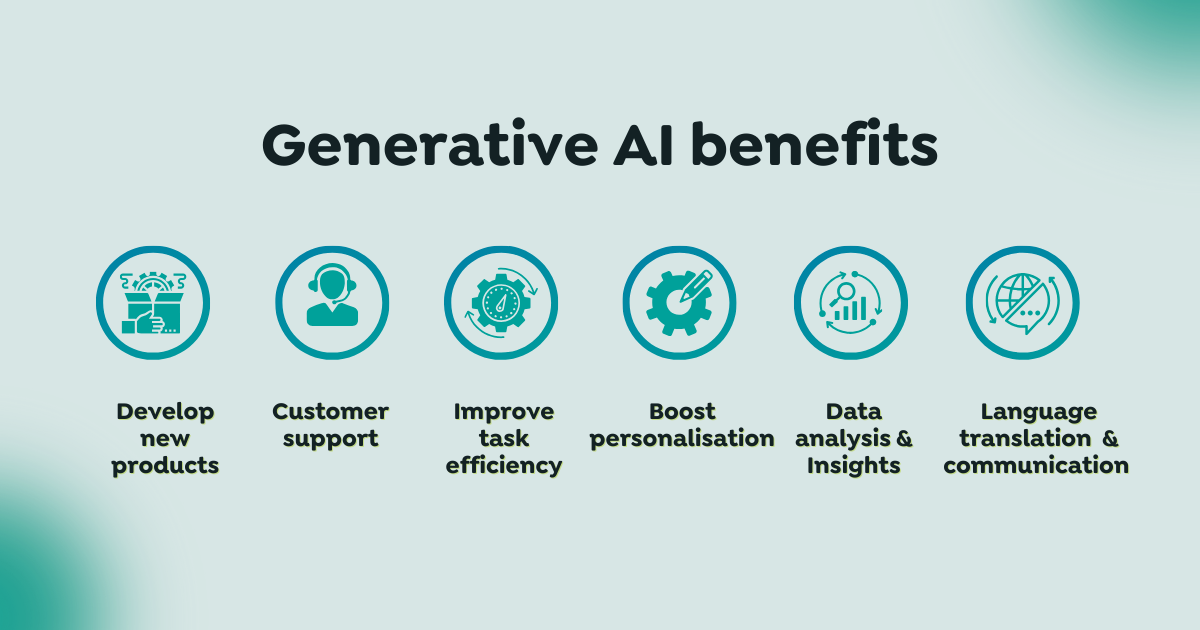The Software Revolution: Key trends, market growth, and strategic insights for UK businesses in 2025

As we enter 2025, the software industry is rapidly changing, driven by fast-paced technological advancements and evolving business needs for efficiency. For businesses, staying ahead of the curve means adapting to these changes and actively embracing them to unlock growth, efficiency, and innovation. From generative AI to sustainability-focused software, the opportunities are immense. Yet, with these opportunities come challenges that require careful navigation.
This comprehensive guide explores the major software trends shaping 2025, delves into the market’s growth trajectory, and unpacks actionable insights to help businesses thrive in this dynamic landscape.
The Big Trends of 2025
The technology landscape in 2025 is dominated by innovations that redefine how businesses operate. Understanding these trends isn’t just advantageous – it’s essential for survival in a hyper-competitive market.
1. Generative AI: Transforming creativity and decision-making
Generative AI is no longer a futuristic concept; it’s a reality reshaping industries by automating complex processes, enhancing creativity, and enabling smarter decision-making. By 2025, generative AI is expected to capture 30% of the AI market, valued at an impressive $60 billion.
- Automated content creation: Marketing teams now rely on generative AI to produce high-quality content, including blogs, social media posts, and product descriptions. This reduces time-to-market while maintaining consistency across platforms. Moreover, visual tools like DALL-E are helping businesses design graphics and edit videos with remarkable ease.
- Customer engagement: AI-driven chatbots powered by models like GPT are delivering hyper-personalised customer interactions. They provide real-time support, resolve issues faster, and enhance user satisfaction by mimicking human-like conversations.
- Enhanced analytics: Generative AI excels in synthesising large datasets, uncovering patterns, and predicting trends. This capability allows businesses to make proactive decisions and stay one step ahead of competitors.
Actionable insight: Identify repetitive or time-intensive processes within your organisation where generative AI can add value. Begin with pilot projects to measure impact before scaling further.
2. Cloud computing and SaaS: The backbone of digital agility
Cloud computing and Software as a Service (SaaS) are the linchpins of digital transformation. By 2025, these technologies will further cement their role as indispensable tools for businesses seeking flexibility, scalability, and cost efficiency.
- Hybrid cloud strategies: Businesses increasingly adopt hybrid cloud models to balance security and performance. Sensitive data can remain on private clouds, while public clouds handle less critical workloads. This approach ensures optimal resource allocation and cost management.
- Global collaboration: Cloud-based tools like Google Workspace and Microsoft Teams empower teams to collaborate seamlessly across borders. Features like real-time editing and secure document sharing have made remote work more productive.
- Cost optimisation: SaaS solutions eliminate the need for costly infrastructure investments. With pay-as-you-go models, businesses can scale operations as needed without incurring unnecessary expenses.
Actionable Insight: Evaluate your organisation’s IT infrastructure and identify areas where cloud or SaaS adoption can improve efficiency, reduce costs, and enhance collaboration.
3. Cybersecurity: Safeguarding digital assets
As cyber threats grow in sophistication, cybersecurity is now a top priority for businesses of all sizes. The stakes are higher than ever, with data breaches not only causing financial losses but also eroding consumer trust.
- Zero-trust security models: This approach ensures that every user and device is rigorously verified before gaining access to systems. By removing implicit trust, businesses can mitigate insider threats and unauthorised access.
- AI-powered threat detection: Machine learning algorithms are being deployed to identify anomalies and respond to threats in real-time, providing businesses with a proactive defence mechanism.
- Compliance and risk management: Regulatory requirements, including GDPR, are driving the need for robust cybersecurity frameworks. Companies that prioritise compliance avoid penalties and build stronger relationships with their customers.
Actionable insight: Conduct regular security audits, train employees on best practices, and invest in AI-driven tools to protect your digital ecosystem.
4. Sustainability: A core driver of innovation
Sustainability is no longer a corporate buzzword—it’s a strategic priority. As consumer awareness and regulatory pressures grow, businesses are integrating sustainability into their software development practices.
- Green software engineering: Developers are focusing on energy-efficient coding practices to reduce the environmental impact of applications. Techniques such as optimised algorithms and server load balancing contribute to greener operations.
- Eco-friendly infrastructure: Data centres powered by renewable energy are becoming the norm as cloud providers prioritise sustainability. Companies adopting these solutions benefit from both reduced carbon footprints and cost savings.
- Circular economy solutions: Software is being designed to support circular business models, such as tracking and managing reusable resources, promoting waste reduction, and enhancing supply chain transparency.
Actionable insight: Partner with cloud providers that prioritise renewable energy and invest in software tools that align with your sustainability goals.
5. Low-code and No-code platforms: Democratising technology
Low-code and no-code platforms are transforming the way businesses approach software development, enabling non-technical users to create applications and automate workflows.
- Empowering citizen developers: These platforms allow employees without coding expertise to design functional applications. This not only reduces the burden on IT teams but also fosters a culture of innovation across departments.
- Faster time-to-market: By simplifying the development process, businesses can roll out new features and products in a fraction of the time compared to traditional methods.
- Cost savings: Low-code tools eliminate the need for expensive software development cycles, making technology adoption accessible even for small businesses.
Actionable insight: Start by automating repetitive tasks using low-code tools and gradually explore their potential for more complex projects.
6. IoT integration: Real-time connectivity and insights
The Internet of Things (IoT) revolutionises how businesses operate by connecting devices, collecting real-time data, and enabling smarter decision-making.
- Smart supply chains: IoT sensors provide visibility into inventory levels, shipment locations, and warehouse conditions, ensuring optimal supply chain performance.
- Customer-centric solutions: Retailers are using IoT devices to gather insights into consumer behaviour, enabling personalised experiences and more targeted marketing campaigns.
- Predictive maintenance: Industries like manufacturing are leveraging IoT to monitor equipment health, reducing downtime and extending asset lifespans.
Actionable insight: Explore IoT applications that align with your business objectives, focusing on areas where real-time data can drive significant operational improvements.
7. Data privacy and compliance: Building consumer trust
In an era of heightened regulatory scrutiny, businesses must prioritise data privacy and transparency to meet legal requirements and build consumer trust.
- End-to-end encryption: Protecting sensitive information from unauthorised access is a baseline expectation for businesses handling consumer data.
- Automated compliance solutions: Software tools that manage data governance, automate reporting, and ensure regulatory adherence are becoming essential.
- Proactive communication: Transparent privacy policies and clear consent mechanisms help build consumer confidence and reduce legal risks.
Actionable insight: Regularly review and update your data privacy practices to ensure they meet the latest regulatory standards and consumer expectations.
The UK software market: Growth projections and opportunities
The UK software market is on a strong growth trajectory, driven by digital transformation and the increasing demand for advanced solutions. Here’s what to expect:
- Market size: The UK software market is projected to grow from USD 53.89 billion in 2023 to USD 70.99 billion by 2030, representing a compound annual growth rate (CAGR) of 3.9%.
- SaaS and IT services boom: The SaaS market and IT services sector are leading this expansion, with IT services expected to reach USD 146.60 billion by 2029.
- Emerging technologies: Innovations in AI, IoT, and cybersecurity are driving demand for specialised software, creating significant opportunities for developers and service providers.
Government initiatives supporting growth
The UK government has implemented a range of initiatives to bolster the software industry, fostering innovation and investment.
- Digital strategy: The UK Digital Strategy aims to grow the tech sector’s gross value added (GVA) by £41.5 billion and create approximately 678,000 jobs by 2025. This initiative focuses on strengthening the digital economy and enhancing the UK’s position as a global tech leader, which is indeed reflected in government documents and reports.
- R&D investments: The UK government has committed to increasing its annual funding for research and development to £20 billion, with incentives designed to encourage private-sector innovation. This investment is part of a broader strategy to bolster the UK’s technological capabilities and support economic growth.
- Skills development: Programs such as Digital Skills Partnerships are actively addressing the talent gap in the tech sector. These partnerships aim to ensure a steady supply of skilled workers by aligning training programs with industry needs, which is crucial for sustaining growth in the software industry.
- Cloud adoption frameworks: Initiatives like G-Cloud promote the adoption of cloud services within the public sector, facilitating a smoother transition for businesses to digital infrastructure. This framework supports public sector organisations in procuring cloud-based solutions, thereby enhancing efficiency and service delivery.
Conclusion:
The software revolution of 2025 is reshaping the business landscape. From the adoption of generative AI and cloud solutions to prioritising sustainability and cybersecurity, the opportunities for UK businesses are immense. However, success requires more than just awareness—it demands strategic action.
At Aecor, we’re passionate about helping businesses navigate these trends. By staying ahead of the curve, we aim to empower organisations to embrace innovation and thrive in this dynamic environment.
The future belongs to those who adapt, innovate, and lead. Together, we can shape what’s next.
Related insights
What our clients say














